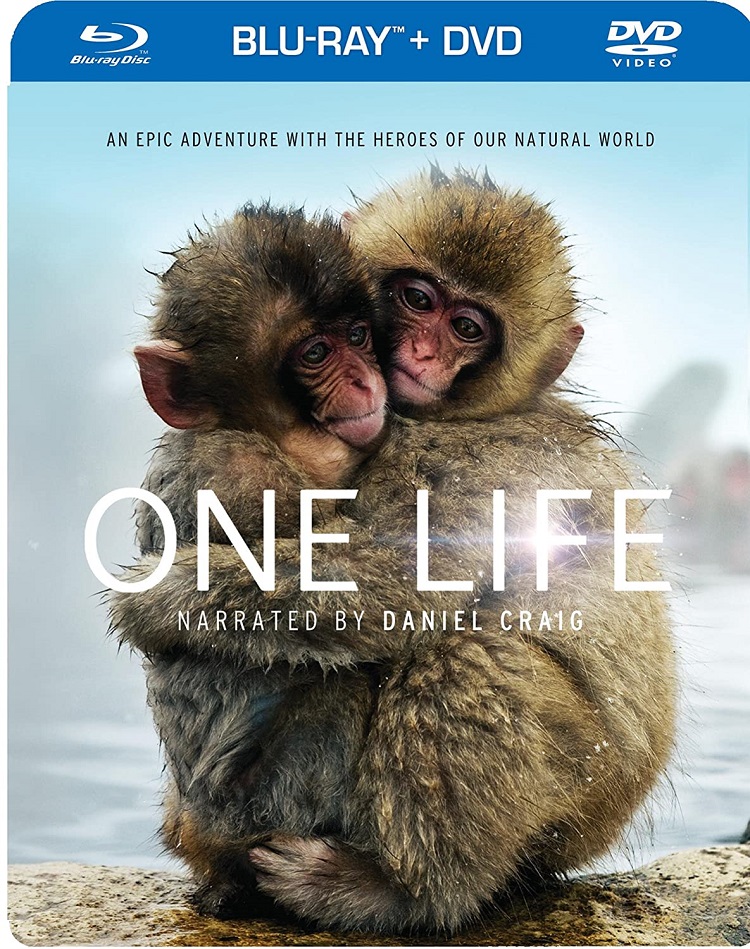
Nature programs have been a staple of family-friendly viewing for decades now. Some have proven to be very popular with the general public, as was the case with the Academy Award-winning March of the Penguins (2005). I have watched countless hours of these types of shows over the years, and the new BBC Earth documentary One Life is one of the most impressive I have ever seen.
Just to give you an idea of what went into the making of this 85-minute feature, the filming took place over the course of 3,000 days. The crew traveled the world to get the shots, and the footage is magnificent. One Life presents animal behaviors that show levels of intelligence that are often ingenious.
The film is set up in four basic segments. The opening scene is of a new-born seal and its mother, on the ice in Antarctica. The mother does her best to keep the infant warm in the sub-zero cold, and after a time, she coaxes her pup into the water. This scene is an example of the many small miracles the movie is filled with. The ice is solid for as far as the eye can see, and she has a small hole that she must keep open, for it is her only access to her food source. When she does get her baby to enter the water, the cameras are there. The crew had no idea of exactly when this would happen, so they just had to wait under the ice for this magic moment to occur.
One Life is filled with beautiful scenes like this. In this opening “mothering” segment, another unforgettable piece is centered on the strawberry poison arrow frog in Costa Rica. The frog is tiny, about the size of a human adult’s fingernail, so just finding one must have been a challenge. The way the mother takes care of her tadpoles displays a remarkable degree of care.
Eggs are laid on the rain-forest floor, and when they hatch, the mother takes the individual tadpoles on her back way up into the trees. She has found a plant up there whose flowers form a natural cup, filled with rainwater. She deposits each tadpole into their own, individual “nursery,” then feeds them with her unfertilized eggs. They safely grow into adults there, then leave to begin their own lives.
The second portion of the film has to do with feeding. There is some hunting during this segment, but what I found the most impressive were the actions of the brown capuchin monkeys. They love nuts and have developed a method of opening them that shows just how intelligent they are. The monkeys first peel the outer portion of the nut off, then they leave it out in the sun to dry for a week. Once it has gotten hard, they take it to a large, table-like rock. Then the monkeys take another rock, and use it to crack the nut. Narrator Daniel Craig informs us that it takes eight years to become a “master nut-cracker,” and I have no doubt that he is correct.
The next section focuses of how some animals defend themselves in the wild. Among a number of interesting diversions, we see small mice creating trails, complete with sharp turns, to trip up monitor lizards. Another great defensive maneuver comes from the aptly named pebble toad. When threatened, the pebble toad folds into himself, and bounces down the side of a cliff, just like a pebble.
One Life closes with a study of mating habits. A couple of scenarios we are shown include swans dancing beautifully across a lake, and a very difficult time for a beetle. After fending off four other would-be suitors, the male beetle figures he has won the affections of the female. When she gives him the brush off, he gets a little angry. He tosses her off of the branch they were sharing, and presumably moves on.
The final scenes in One Life involve a real-life clash of the titans. Male humpback whales fight for the affections of a female, and their battles are ferocious. It all ties in to the circle of life, or simply the “one life” theme of the film.
BBC Earth’s release of One Life is a combo-pack, with the film on a Blu-ray, a standard DVD, and a code for an ultra-violet copy. The most significant of the extras is the “Behind the Scenes” study, which focuses on the filming of the strawberry poison arrow frog, ibex, silverback gorillas, and komodo dragons. There is also a “Making of” featurette, interviews with the filmmakers, and a short piece about the music.
The amount of time and dedication that it took to produce One Life is evident on the screen, and is frequently astonishing. If there is another candidate for finest nature film of 2013, I would like to see it, because I cannot imagine anything as powerful as One Life.